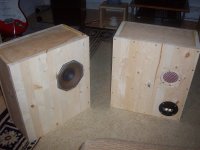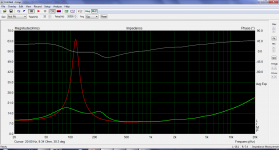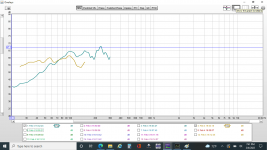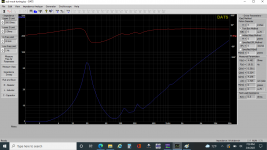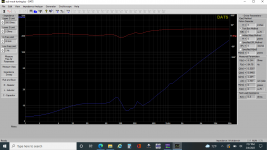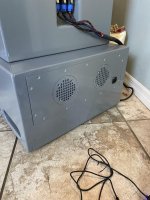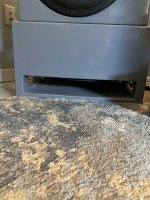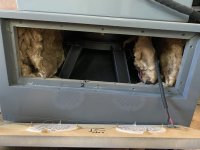Empirical formula is OK
Thanks!
I don't have any problem with the fact that the formula is empirical. Did you find that formula from some other source or did you discover it by your own experiments?
If you wish to experiment, there is an empirical formula for calculating the total area of the resistive vent.
A = 5.5 x V [0.818 (Fs/25) + 0.182]
Where A is the resistive vent area in sq in, V is the enclosure volume in cu ft and Fs is the resonant frequency, in Hz, of the driver in free air.
Thanks!
I don't have any problem with the fact that the formula is empirical. Did you find that formula from some other source or did you discover it by your own experiments?
The formula is from an article by Steve Hutton published in the December 1974 issue of Hi-Fi News & Record Review.
During the 1960s, and continuing into the 1970s and 80s, a great many DIY speaker designs were published in the UK hi-fi press.
One of the DIY designs which appeared in Hi-Fi News was Steve Hutton's “Inexpensive Reflex Speaker” (December 1971) - so he did have some experience in the field.
One of the DIY designs which appeared in Hi-Fi News was Steve Hutton's “Inexpensive Reflex Speaker” (December 1971) - so he did have some experience in the field.
I see this topic kinda stalled...I really got into these aperiodics and decided to try my hand at a sub using one of the B-52 SP1804 18"subs. I read all kinda stuff about designing the enclosure and the majority said modeling a .1 qts sealed enclosure would get you the "right" volume to start with, so I went with that. I got four 4" pvc Oatey drain covers and cut them to just under 3/8" deep(let's call them vents now) so putting them back to back gave me 3/4" for the MDF back panel thickness. I made the rear panel of the sub removable and mounted 2 of the vents inside so I couldn't push them thru. I bolted the back panel in, stuffed the vent with dacron batting cut into discs that fit inside the vents perfectly, mounted the outer vents in place and measured the impedance using DATS2. I was able to drastically reduce the impedance peak and get it sounding pretty nice. To me it is on the "dry" side but I like that. Using miniDSP and REW EQ I got it exactly where I want it; tight response with quick transients. I plan to mess around with another enclosure soon just to try and maximize the sound; maybe you guys can help me through it with experience or guidance I missed! I'll throw up some pics/charts later. Really looking forward to this.
Brad, any pictures of the before/after impedance?
Bill has recently added more info on his “DAMPS’ aperiodic loading (the paper is long, the aperodic bit deep in the document). It may help others improve their aperiodic projects.
https://www.pearl-hifi.com/03_Prod_Serv/PR2/PR2_Content.html
dave
Bill has recently added more info on his “DAMPS’ aperiodic loading (the paper is long, the aperodic bit deep in the document). It may help others improve their aperiodic projects.
https://www.pearl-hifi.com/03_Prod_Serv/PR2/PR2_Content.html
dave
Last edited:
I do have some at home on my computer...just gotta get outta the job first! 😀 Thanks for that link!Brad, any pictures of the before/after impedance?
Bill has recently added more info on his “DAMPS’ aperiodic loading (the paper is long, the aperodic bit deep in the document). It may help others improve their aperiodic projects.
https://www.pearl-hifi.com/03_Prod_Serv/PR2/PR2_Content.html
dave
Quite impossible, so what was it really?I read all kinda stuff about designing the enclosure and the majority said modeling a .1 qts sealed enclosure would get you the "right" volume to start with, so I went with that.
I expect that should say q=1.0... the majority said modeling a .1 qts sealed enclosure would get you the "right" volume to start with
The aperiodic vent lowers the Q, so you want to start at a higher Q than you want in the end, and that usually is no lower than 0.5.
dave
It was a typo...1.0 q...my badQuite impossible, so what was it really?
Last edited:
Thanks! Assumed as much, but there's so much ignorance/pure BS on the WWW nowadays that I wanted stop this one 'dead in its tracks' if published somewhere.
So here are some pics of the enclosure, vents, impedance and response before and after miniDSP. The "vents" are a bit too small according to the above formula and really pushing them hard with just a 25hz wave I could hear their effects...just gotta get around to making a larger panel. I plan to start renovating them this spring so any ideas are welcome.
Attachments
BTW, the subs are the bottom cabinet; downfiring...just for clarification. The 2226G's above are midbass/midrange with JBL AM-6200 horns above in a custom mount.So here are some pics of the enclosure, vents, impedance and response before and after miniDSP. The "vents" are a bit too small according to the above formula and really pushing them hard with just a 25hz wave I could hear their effects...just gotta get around to making a larger panel. I plan to start renovating them this spring so any ideas are welcome.
I use these for subs/bass only. I cross them in the mini dsp at 110Hz, 4th order LR so that’s never even in consideration. I know some will say it’s a waste of an 18 sub, but with the miniDSP, not so much.
I'm fascinated by this midtl design. It looks functional and it is gorgeous. Say, would this work with the new Alpair 7MS? Also, do you have any more details on this design?GM’s post reminds me that i have done a number of (close to) aperiodic midTLs.
Here the impedance from an early one:
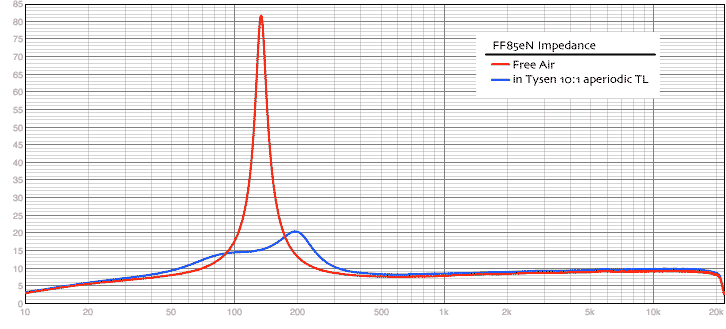
These don’t make for pretty pictures, but this should give an idea:

Meant to sit on top of a miniOnen the same size.
And this the midTL in the big A12pw MTM:
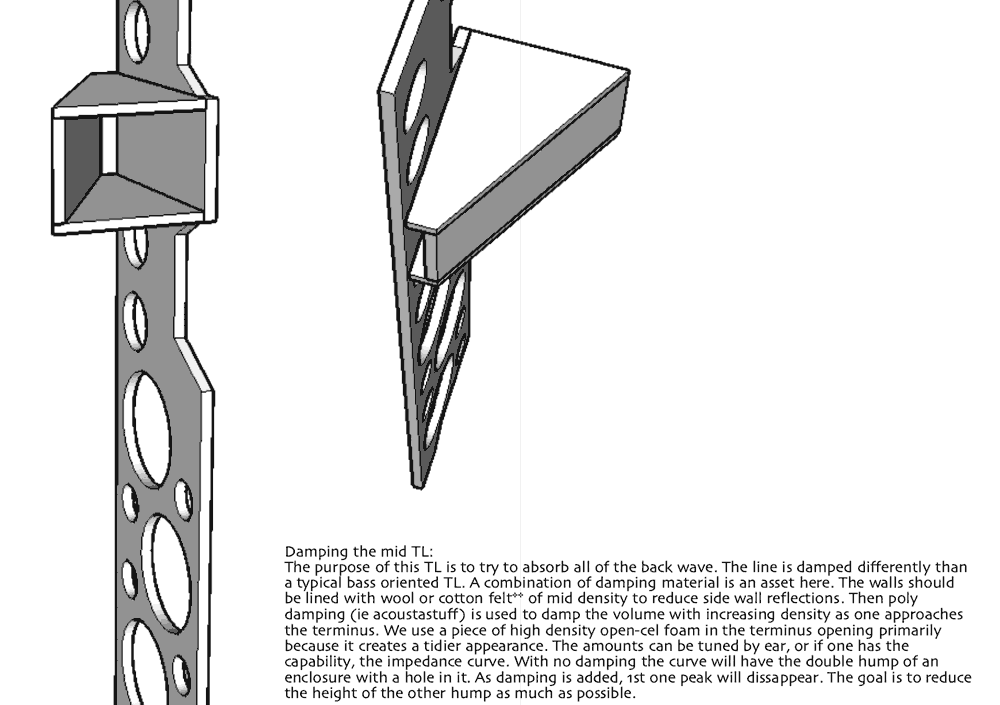
That aperiodicTL is inside these boxes:
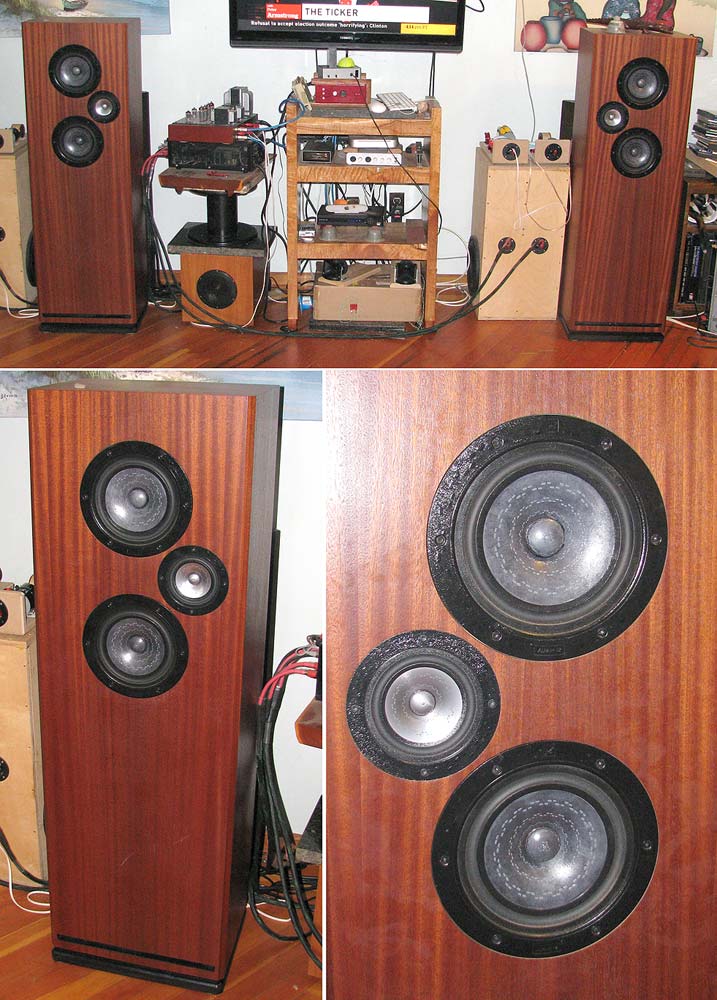
dave
Attachments
The entire MTM design is available as a paid planset.
The trapezoidal midTL you have extacted and atteched goes with the A12pw Mr-Ken. A simple height change allows for use of any midTweeter that fits. This design has no passive XO.
A midTL is pretty easy to design. There is little that is critical. Basically you want to make as “long” a line as there is space availble. A heavy taper makes the line appera longer. One does not want the sides too close at the driver which usually means box size is larger than the minimum with no effort.
A midTL will work really well with a midTL. It is a potential change in the MTM (drops right in, but the passive XO may not work as well — speakers are aimed at being bi-amped). A5.2/3, A6.2m/p, A7.x, P7x (or any 3-4” fun-range you are enamoured of, the first 2 mean there is no hope for the HP of the passive XO.
dave
The trapezoidal midTL you have extacted and atteched goes with the A12pw Mr-Ken. A simple height change allows for use of any midTweeter that fits. This design has no passive XO.
A midTL is pretty easy to design. There is little that is critical. Basically you want to make as “long” a line as there is space availble. A heavy taper makes the line appera longer. One does not want the sides too close at the driver which usually means box size is larger than the minimum with no effort.
A midTL will work really well with a midTL. It is a potential change in the MTM (drops right in, but the passive XO may not work as well — speakers are aimed at being bi-amped). A5.2/3, A6.2m/p, A7.x, P7x (or any 3-4” fun-range you are enamoured of, the first 2 mean there is no hope for the HP of the passive XO.
dave
I see. I am happy to hear that it is simple to design. Perhaps I will download this wood design software I see so many using and give it a try.
My plan is to design my own hybrid active crossover (DSP for bass and passive filters for midtweeter), which I am currently learning to do, so crossover compatibility there is of no concern to me. For now I am just looking for a suitable cabinet design for my 7MS speaker, which I want to cross over at 550Hz.
I have also thought about an aperiodic midtl, or even a sealed dagger cabinet like XRK971 uses in his 10F/RS225 FAST TL. Having a hard time deciding which..
If you happen to have any separated midtl cabinet designs as I attached, I would be happy to pay for its details if it would work suitably with the Alpair 7MS.
I actually have just made a post about what I'm looking for here:
https://www.diyaudio.com/community/threads/midtl-cabinet-for-alpair-7ms.389370/
I have been looking at your work for inspiration. I am a newbie, so it is very useful to have the excellent resource of your content
My plan is to design my own hybrid active crossover (DSP for bass and passive filters for midtweeter), which I am currently learning to do, so crossover compatibility there is of no concern to me. For now I am just looking for a suitable cabinet design for my 7MS speaker, which I want to cross over at 550Hz.
I have also thought about an aperiodic midtl, or even a sealed dagger cabinet like XRK971 uses in his 10F/RS225 FAST TL. Having a hard time deciding which..
If you happen to have any separated midtl cabinet designs as I attached, I would be happy to pay for its details if it would work suitably with the Alpair 7MS.
I actually have just made a post about what I'm looking for here:
https://www.diyaudio.com/community/threads/midtl-cabinet-for-alpair-7ms.389370/
I have been looking at your work for inspiration. I am a newbie, so it is very useful to have the excellent resource of your content
Last edited by a moderator:
I have also thought about an aperiodic midtl, or even a sealed dagger cabinet like XRK971 uses in his 10F/RS225 FAST TL. Having a hard time deciding which..
Dagger is a poor man’s midTL, but a half-wave line. It needs to be 2x as long as a quarter-wave midTL, but it is an ingenious shape for a sealed enclosure.
If you happen to have any separated midtl cabinet designs as I attached, I would be happy to pay for its details if it would work suitably with the Alpair 7MS.
The midTL you are interested in is in the A12pw set. Given what you get when you buy a planset, it could be detailed specifically to suit your needs.
dabe
- Home
- Loudspeakers
- Full Range
- Show your aperiodic speakers
